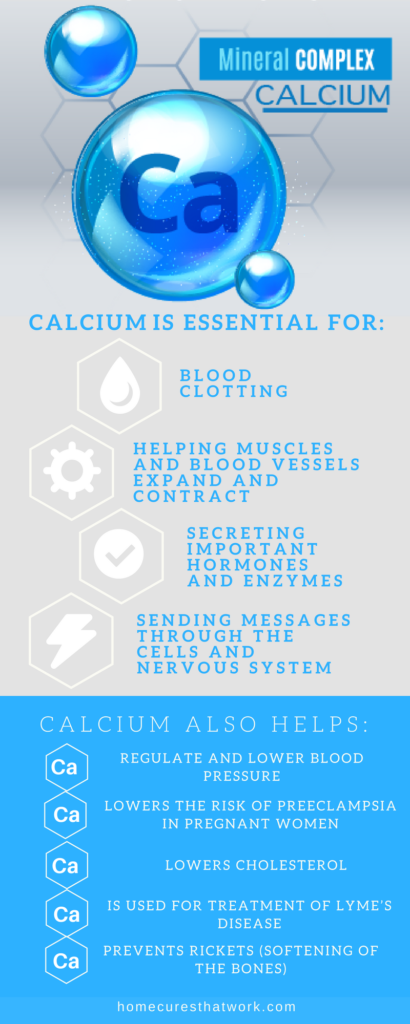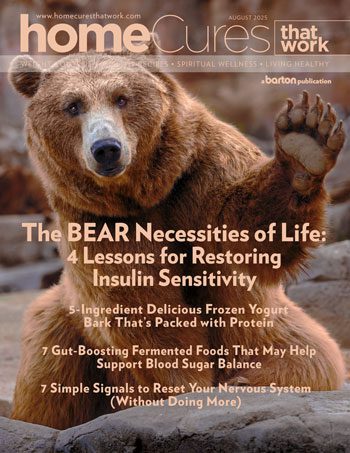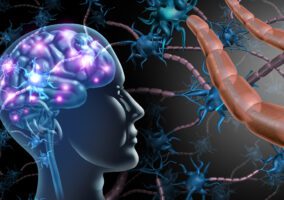Calcium – Is Milk a Good Source?
A Review of Calcium Supplements
Calcium is an essential mineral required by our bodies. Calcium deficiency is one of the primary causes of osteoporosis. Milk is hailed as one of the best sources for calcium.
But if milk is a such good source of calcium, why is it that countries with the highest dairy consumption (most modernized, Western cultures) also have the highest rates of osteoporosis?[1] “According to the International Osteoporosis Foundation, the United States and Europe account for 51% of all fractures from osteoporosis.”[2]
The problem seems to be not with the amount of calcium in milk, but the fact that homogenized, pasteurized milk is rendered acidic by those processes. And it’s the acid levels of processed milk that are the culprit. When our body’s pH level drops too low from taking in too much acid (drinking milk contributes to this problem), our body looks for alkaline elsewhere in the body to maintain a healthy pH level. And the most likely place for the body to find alkaline substance is in the bones.[3]
Over time, this continual leaching of alkaline substance from the bones makes them weak and osteoporosis is one of the results.[4] So while milk does contain a high level of calcium, milk’s negative impact on our pH level counters any good it might have provided.
Calcium—an Essential Mineral
Calcium is the most abundant mineral in the body with 99 percent of it residing in our bones and teeth. The other 1 percent of this essential mineral is vital for:
- Blood clotting
- Helping muscles and blood vessels expand and contract
- Secreting important hormones and enzymes
- Sending messages through the cells and nervous system[5]
Calcium also helps:
- Regulate and lower blood pressure
- Lowers the risk of preeclampsia in pregnant women
- Lowers cholesterol
- Is used for treatment of Lyme’s disease
- Prevents rickets (softening of the bones)[6]
We cannot live without calcium and sufficient amounts of this important mineral help determine our overall health.
We don’t often realize that our bones are living tissue and are constantly in flux. The body uses our bones as the storehouse for calcium, so when calcium is needed elsewhere in the body, our body takes it from our bones.[7] The body cannot manufacture calcium, so we must bring it in from outside sources to replenish the stores in our bones. The best source of calcium is food because of our ability to absorb it.[8]
Foods Rich in Calcium
In light of what we said earlier about processed milk, raw milk retains its alkaline pH characteristic and can provide a good source of calcium.[9] Just 8 oz. of organic plain yogurt provides 42 percent of your daily need for calcium. While processed milk has that negative impact on our health, a major study conducted in Sweden found that fermented milk products (cheese and yogurt) have a positive effect on preventing bone fractures.[10]
Another reason to try raw milk is if you’re lactose intolerant. Numerous individuals who are lactose intolerant have found that they do not react to raw milk.[11] If you cannot tolerate any dairy products, there are plenty of other foods that offer good amounts of calcium.
Other foods that contain good amounts of calcium include:[12]
- Orange juice fortified with calcium
- Sardines, canned in oil with their bones
- Salmon, canned with bones
- Cereals that are calcium fortified
- Kale and other dark green vegetables
- Almonds
- Chinese cabbage
- Broccoli
Recommended Daily Intake of Calcium[13]
| Age | Male | Female | Pregnant | Lactating |
| 0–6 months* | 200 mg | 200 mg | ||
| 7–12 months* | 260 mg | 260 mg | ||
| 1–3 years | 700 mg | 700 mg | ||
| 4–8 years | 1,000 mg | 1,000 mg | ||
| 9–13 years | 1,300 mg | 1,300 mg | ||
| 14–18 years | 1,300 mg | 1,300 mg | 1,300 mg | 1,300 mg |
| 19–50 years | 1,000 mg | 1,000 mg | 1,000 mg | 1,000 mg |
| 51–70 years | 1,000 mg | 1,200 mg | ||
| 71+ years | 1,200 mg | 1,200 mg |
Symptoms of Calcium Deficiency
Calcium deficiency is called hypocalcemia. Symptoms of hypocalcemia depending on severity and length of time can include:[14]
- Numbness or tingling in the fingers
- Muscle cramps
- Lethargy
- Poor appetite
- Mental confusion
- Skeletal malformations
- Dermatitis
- Delayed development in infants
- Osteoporosis
- Rickets
About 10 million Americans have osteoporosis, 80 percent of whom are women. Each year in the US, 1.5 million bone fractures occur due to osteoporosis, 300,000 of which are broken hips.[15]
Bone loss occurs as a natural part of the give and take of calcium in our bodies. But as we age, it becomes more difficult to replace the calcium we lose.
The extent of bone loss with an individual depends on their genetic makeup, lack of physical exercise, and decreased levels of hormones (estrogen in women, testosterone in men).[16]
Besides sustaining a healthy intake of calcium, regular physical exercise is one of the best things you can do to maintain strong, healthy bones. Weight-bearing, muscle-strengthening exercises are especially important.[17] Additionally, you may want to talk to your doctor about supplementing with bio-identical hormones.
In addition to post-menopausal women, other groups who are risk for calcium deficiency include vegetarians and those who are lactose intolerant.
The Important Link between Vitamin D and Calcium
The body cannot absorb calcium properly without vitamin D. Vitamin D enables the formation of the hormone calcitriol. This hormone regulates the levels of calcium in the body and bones. Calcitriol is needed by the intestines for the proper absorption of calcium from the foods we eat. Calcitriol also limits the amount of calcium that we excrete, ensuring that our body retains enough.[18]
Dangers of Too Much Calcium
So many good things in life are good only when enjoyed in moderation. Calcium is one of those things. As important as calcium is, too much calcium has been identified as a risk factor for other problems. Some of these include: prostate cancer, kidney stones, constipation, interference with the absorption of iron and zinc in the body, and negative interactions with some medications.[19]
There are also certain forms of calcium that the body cannot absorb or that may be dangerous. Neither bone meal nor dolomite (a sedimentary rock comprised of calcium and magnesium) should be used as they may contain lead.[20]
Supplementing with Calcium
Most people who consume dairy products get sufficient calcium in their diet.[21] Getting enough vitamin D for the body to absorb that calcium is probably a greater concern. Due to the dangers of too much calcium, speak with your healthcare provider about whether you need to supplement with calcium.
On the other hand, if you are a woman past menopause, lactose intolerant, or a vegetarian, there’s a greater likelihood that you need to supplement with calcium. Many calcium supplements are fortified with vitamin D. There are two major forms of calcium available over-the-counter:
- Calcium carbonate is a main ingredient in antacid products like Tums and Rolaids. While this is an inexpensive source of calcium, calcium carbonate is not easily absorbed by the body.[22] There are also dangers associated with taking antacids habitually. As we age, the amount of stomach acid we produce to break down foods decreases. Regularly taking antacids will only worsen that problem.[23]
- Calcium citrate is absorbed much better by the body than calcium carbonate especially if you’re over 50.[24]
The recommended dosage as a supplement is 500 mg per day to begin with, adding more over time as needed. If you do take more than 500 mg per day, spread it out over the day, never consuming more than 500 mg at a time. This will allow for greater absorption.[26]
One other “free” source of calcium that you may not have thought of is egg shells. These must be ground to a powder for optimum absorption, but they do represent a good source of calcium.[27] One-half teaspoon of powdered chicken egg shell provides 90 percent of the DV for calcium.[28] But egg shell consists of calcium carbonate, so it’s not as easily absorbed by the body.[29]
Review of Calcium Supplements
Labdoor, Inc. offers the following recommendations from a quality standpoint in order of best quality first. We only list the top 10 that also contain vitamin D3.[30]
- Bluebonnet Calcium Citrate Magnesium and Vitamin D3
- Solgar Calcium Magnesium with Vitamin D3
- GNC Calcium Plus 1000 with Magnesium and Vitamin D3
- Kirkland Signature Calcium Citrate Magnesium and Zinc with Vitamin D3
- Swanson Calcium Citrate & Vitamin D
- Citracal Calcium + D3, Slow Release
- Amway Nutrilite Cal Mag D Advanced
- Rainbow Light Calcium with Magnesium & Vitamin D3
- Schiff Super Calcium with Vitamin D3
- Nature’s Bounty Coral Calcium with Vitamin D3
As you shop for a calcium supplement, you’ll want to consider the value of each product as well. This has to do with milligrams per serving, number of servings per bottle, and cost.
No one knows your body better than you do. Based on your gender, age, genetic history, eating habits and other factors we’ve mentioned here, are you a candidate for a calcium supplement? If you want to be sure, have your doctor order a blood calcium test for you and take action accordingly. Then you’ll know whether you’re getting the calcium you need for strong, healthy bones and optimum health.


























